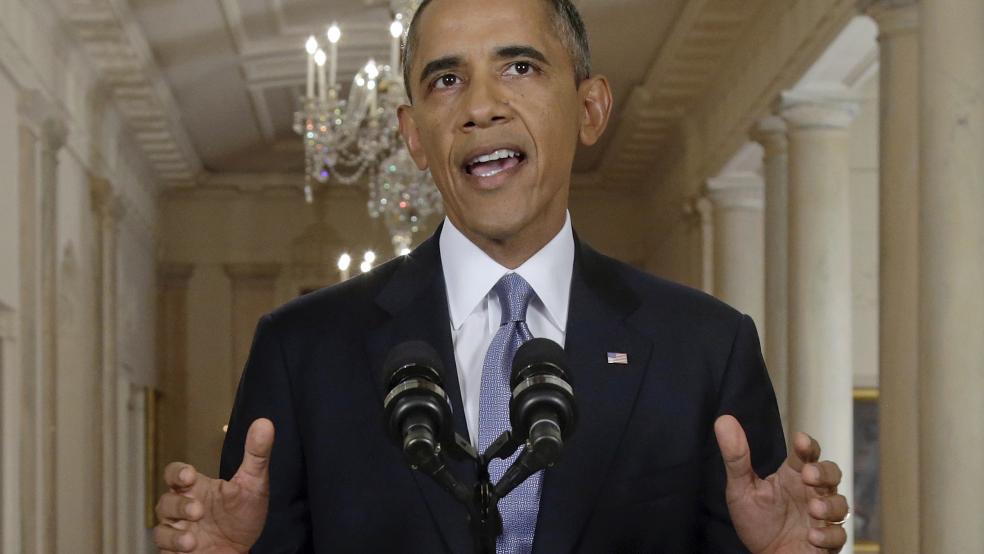In an effort to break the stalemate in the fight against Islamic State militants, President Obama has reconfigured key elements of the administration’s strategy to degrade and defeat the terror group.
According to The New York Times, the president has signed off on plans to let the Defense Department directly arm Syrian rebels with weapons and ammunition and boost the amount of airstrikes flown from Turkey against ISIS.
The moves are meant to bolster thousands of Arab and Kurdish fighters in Syria. The U.S. wants the fighters to encircle the ISIS stronghold of Raqqa and seal a key 60-mile stretch of Syria’s border with Turkey that has served as a supply line for the terrorist organization.
According to former House Intelligence Committee chair Mike Rogers, a change in strategy is long overdue. “Obviously there need to be a shift. The problem was it needed to happen three and a half years ago,” he said.
Related: 14 Deadly Weapons Russia Has Sent To Syria
The Michigan Republican took issue with giving weapons and ammo to Syrian forces because the situation on the ground is “more confusing now than it ever has been” thanks to the various loyalties that have sprung up over the course of the country’s years-long civil war.
Still, Rogers said, the new approach could fare better than the administration’s train-and-equip effort, even though “everything that went into that fiasco still exists on the ground today.”
He also expressed concern that the increased airstrikes are meant to deter Russia from launching its own airstrikes, and aren’t being driven by better intelligence about ISIS ground targets.
The tense situation in the skies between the two former Cold War enemies requires a “much deeper, much more thoughtful approach,” according to Rogers.
The former lawmaker approved of using local forces to secure the border and using them to close off Raqqa rather than sending forces into the city, since ISIS has “held it for long and prepared for invasion.”
Related: Why Donald Trump Is Vladimir Putin’s Favorite Presidential Candidate
The strategy could also send a worldwide message to potential ISIS recruits that the group “is not winning.”
Taken together, the moves represent “what they have left as a strategy,” said Rogers.
The shift comes after a series of embarrassing setbacks for the U.S.-led fight against ISIS, especially regarding the administration’s $500 million effort to train and equip moderate Syrian rebels. The program was supposed to churn out thousands of fighters annually, but has yielded only a few dozen that have thus far proven ineffective on the battlefield.
Aggressive moves by Russia have also complicated Obama’s efforts in Syria, as personnel and equipment have poured into the country in recent weeks. Russian President Vladimir Putin originally claimed the forces were needed to battle ISIS, but U.S. intelligence has indicated that recent airstrikes executed by Moscow have targeted other opponents of the Assad regime.
For its part, the White House wouldn’t confirm the report of a strategy shake-up.
Related: Is Putin Preparing to Use Russian Ground Troops in Syria?
“What I will say is those plans cite continued support for Syrian- Kurdish and Syrian-Arab fighters,” press secretary Josh Earnest said during a briefing.
He touted the role of Syria and Kurdish ground forces have played in taking back territory from ISIS and emphasized that coalition air power has helped rout the terror group.
“I would note that those efforts by Syrian-Kurdish fighters have been backed by U.S. and coalition military airstrikes that have improved their performance on the battlefield,” Earnest said. “So that is one element of our counter-ISIL strategy that has yielded” progress.





